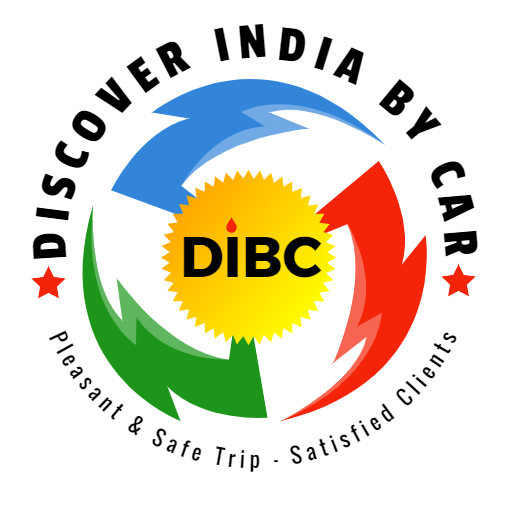- Private car and driver in Delhi / India
- +91-8447445445
- info@discoverindiabycar.com sugar.ankit@yahoo.com
 +91-9818434712
+91-9818434712
Exploring the Best Markets in Jaipur: A Local’s Heartbeat in Every Alley
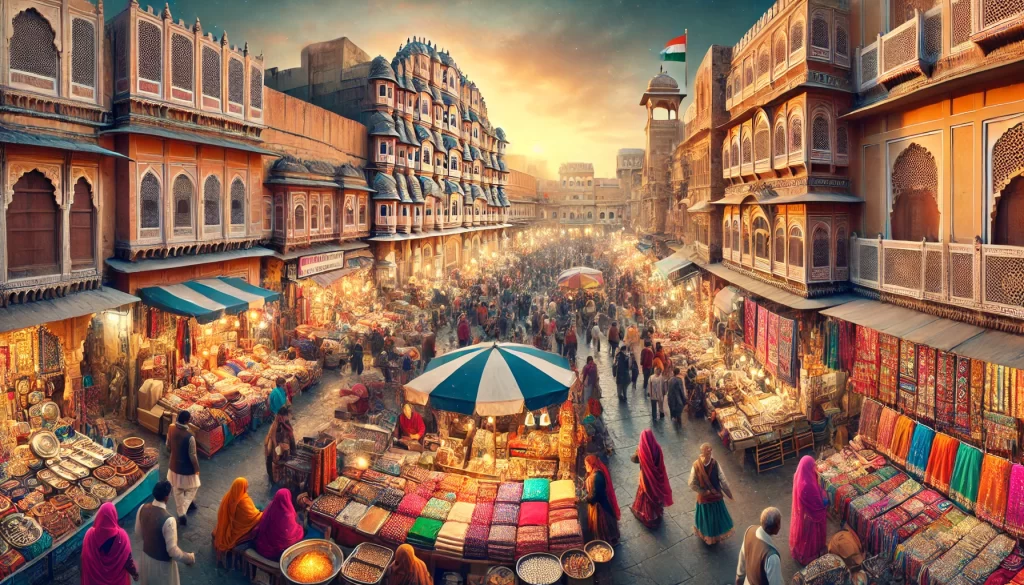
Jaipur isn’t just a city—it’s a sensory carnival. As someone who’s wandered these lanes for years, I can tell you: the best markets in Jaipur aren’t on Google Maps. They’re in the laughter of bangle sellers, the clang of blacksmiths shaping iron, and the sly grin of a spice vendor handing you a mirchi (chili) to test your courage. Forget sterile malls; here, shopping is a dance of haggling, chai breaks, and discovering that the “antique” brass lamp you bought was actually forged last Tuesday (but you’ll love it anyway). Let’s ditch the scripted guides and dive into the messy, magical soul of Jaipur’s bazaars.
Why Jaipur’s Markets Are the City’s True Royalty
Forget the palaces—Jaipur’s markets are where the real magic lives. Here’s the raw, unfiltered truth:
- Artisans Over Algorithms: While the world goes digital, Jaipur’s markets thrive on calloused hands. The block printer staining fabric with indigo? His family’s done this since Akbar ruled. The gem cutter squinting at a ruby? He’s the reason Tiffany’s has inventory.
- Controlled Chaos: Yes, you’ll get jostled. Yes, a cow might photobomb your shopping spree. But that’s the charm—it’s alive.
- Prices That Bite (Until You Bargain): That ₹5,000 silk saree? Start at ₹1,500. The vendor will act offended. You’ll both laugh. Meet at ₹2,800. Everyone wins.
The Unspoken Rules of Jaipur’s Markets
Before we dive in, let’s get real:
- Rule 1: Wear slip-on shoes. You’ll be removing them constantly to try mojris.
- Rule 2: Carry tissues. Street food + spice stalls = risky business.
- Rule 3: Learn these phrases:
- “Kitna hua?” (How much?)
- “Bhaiya, thoda kam karo” (Bro, lower it a bit)
- “Chai piyoge?” (Tea?)—say yes. Trust me.
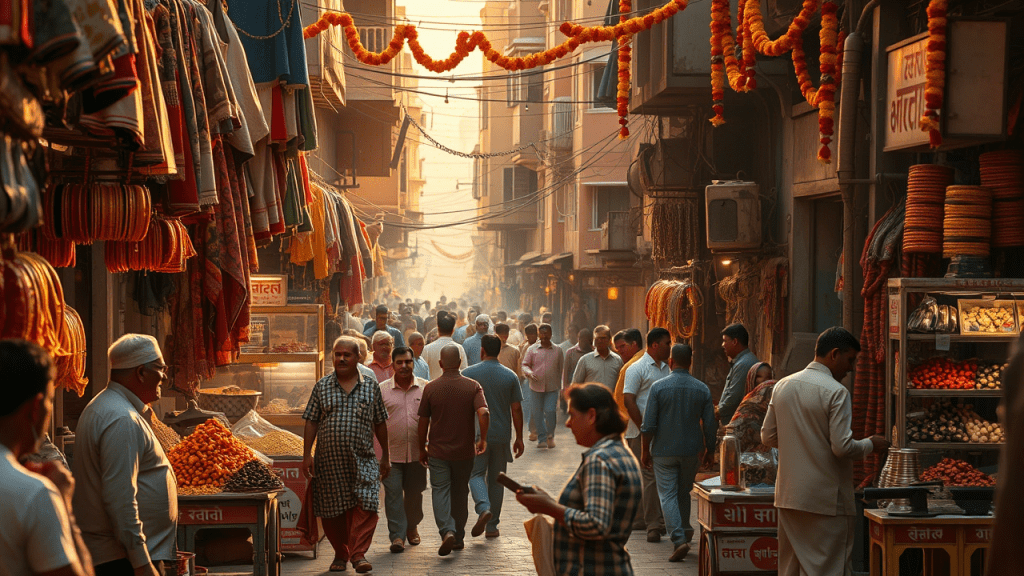
6 Best Markets in Jaipur: No Filter, Just Flavor
-
Johari Bazaar: Where Diamonds Have Dirty Secrets
The Real Talk: This isn’t Zales. Shops here look like they haven’t changed since the British left. But behind dusty windows lie emeralds smuggled from Colombia, rubies heated to hide flaws, and gold so pure it bends. Want the truth? The guy at Mohanlal Verma (a hole-in-the-wall shop) will show you uncertified stones half the price of big stores. Risky? Maybe. Authentic? Absolutely.
- Must-Buy: Tribal silver nose rings (they’ll call you “Maharani” when you wear them).
- Secret: The lane behind Hawa Mahal sells discounted kundan sets—slightly imperfect, 100% gorgeous.
- Avoid: Shops with English menus. Overpriced.
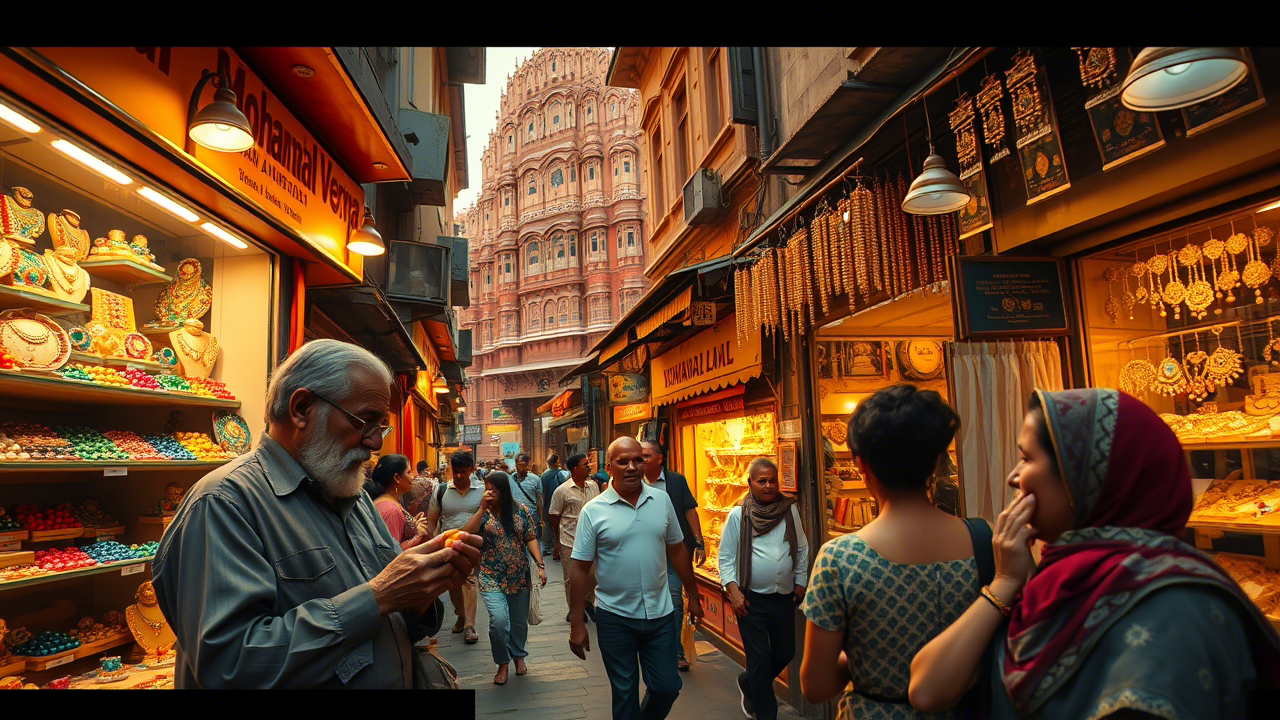
Bapu Bazaar: Where Sarees Have Moods
The Real Talk: This market doesn’t do pastels. It’s pink leheriya dupattas for weddings, blood-red bandhani for rebels, and acid-green gota patti for attention seekers. The shopkeeper at Rajasthan Textiles will drape you in 10 sarees before you say “no.” Pro tip: Buy a ₹300 cotton scarf as a peace offering after haggling.
- Must-Buy: Black velvet mojris with silver thread—pair with jeans, watch heads turn.
- Secret: Kishan Lal Govind Mal has a backroom with vintage phulkari dupattas from Punjab. Don’t ask—just smile.
- Avoid: Pre-stitched blouses. Tailoring here is…creative.
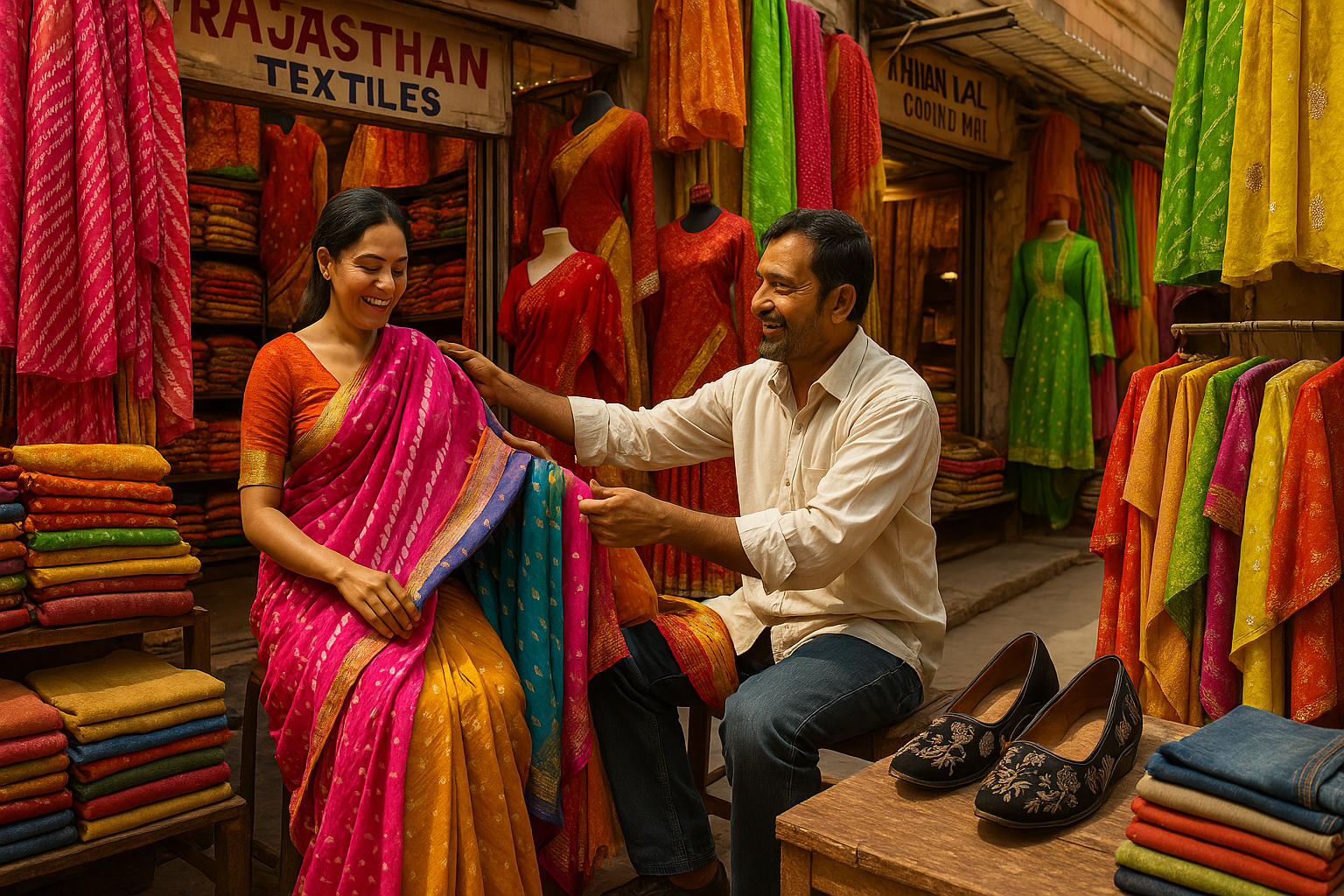
Tripolia Bazaar: God’s Own Garage Sale
The Real Talk: Need a brass Shiva statue for your yoga studio? A marble Ganesh for your startup’s lobby? This is your spot. The lac bangle wallahs here are magicians—they’ll resize a bangle on your wrist using a candle flame. Warning: The halwai nearby sells ghee-soaked jalebis. Resistance is futile.
- Must-Buy: Miniature brass bells (they sound like temple mornings).
- Secret: Babu Lal in Lane 4 repairs broken jewelry while ranting about politics. Worth the show.
- Avoid: “Antique” swords. They’re made last week.
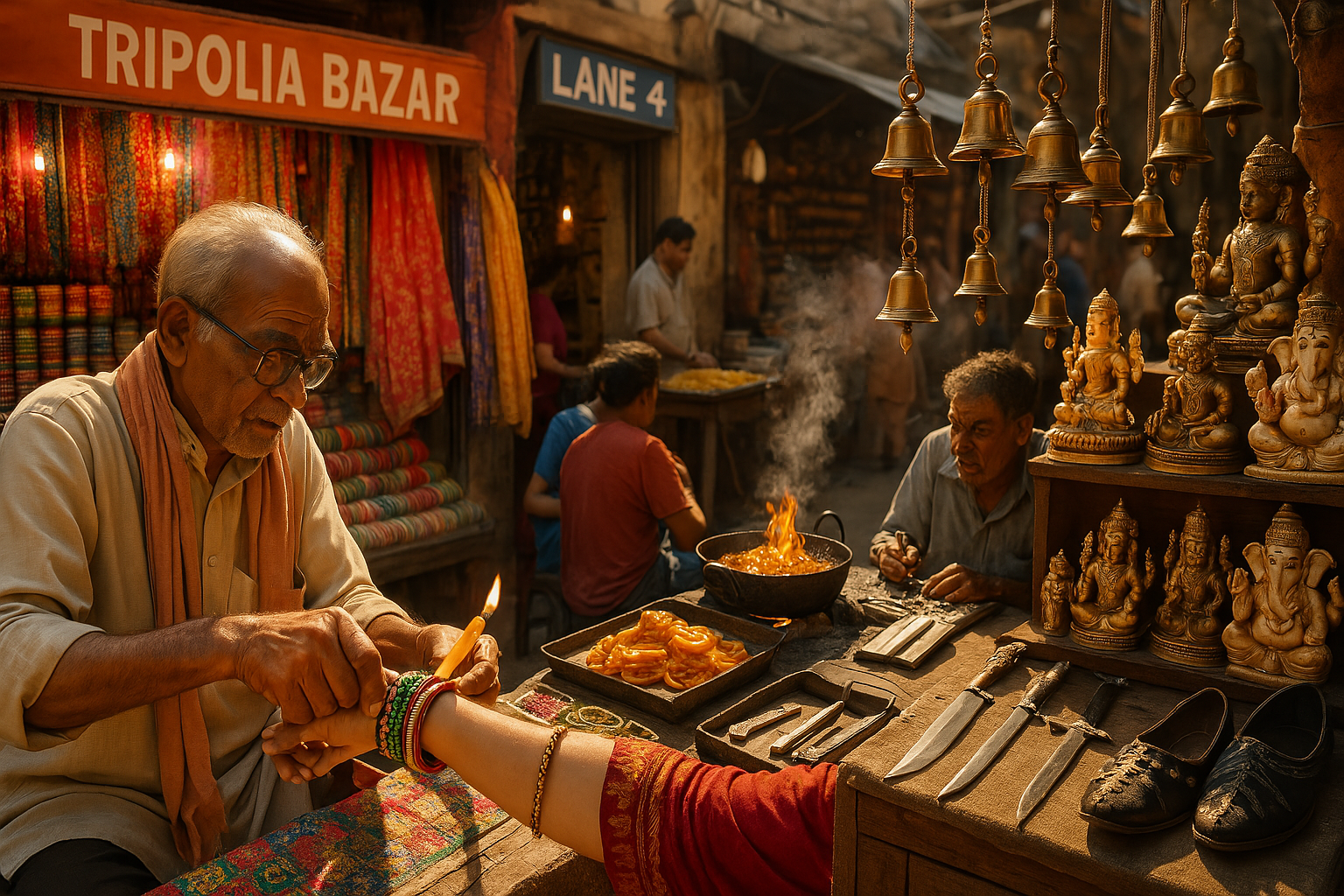
Chandpole Bazaar: Marble Dust & Blue Lies
The Real Talk: That “hand-carved” marble elephant? Probably machine-cut. But the blue pottery here is the real deal—crafted from crushed glass, not clay. At Kripal Kumbh, the owner will show you how cobalt oxide turns into peacock feathers on clay. Buy a tea set, break a cup later, and cry—it’s part of the experience.
- Must-Buy: Marble bookends shaped like camels. Quirky and functional.
- Secret: The tiny chai stall near the mosque serves cardamom tea in clay cups. Free refills.
- Avoid: Marble tabletops. Shipping costs more than your flight.
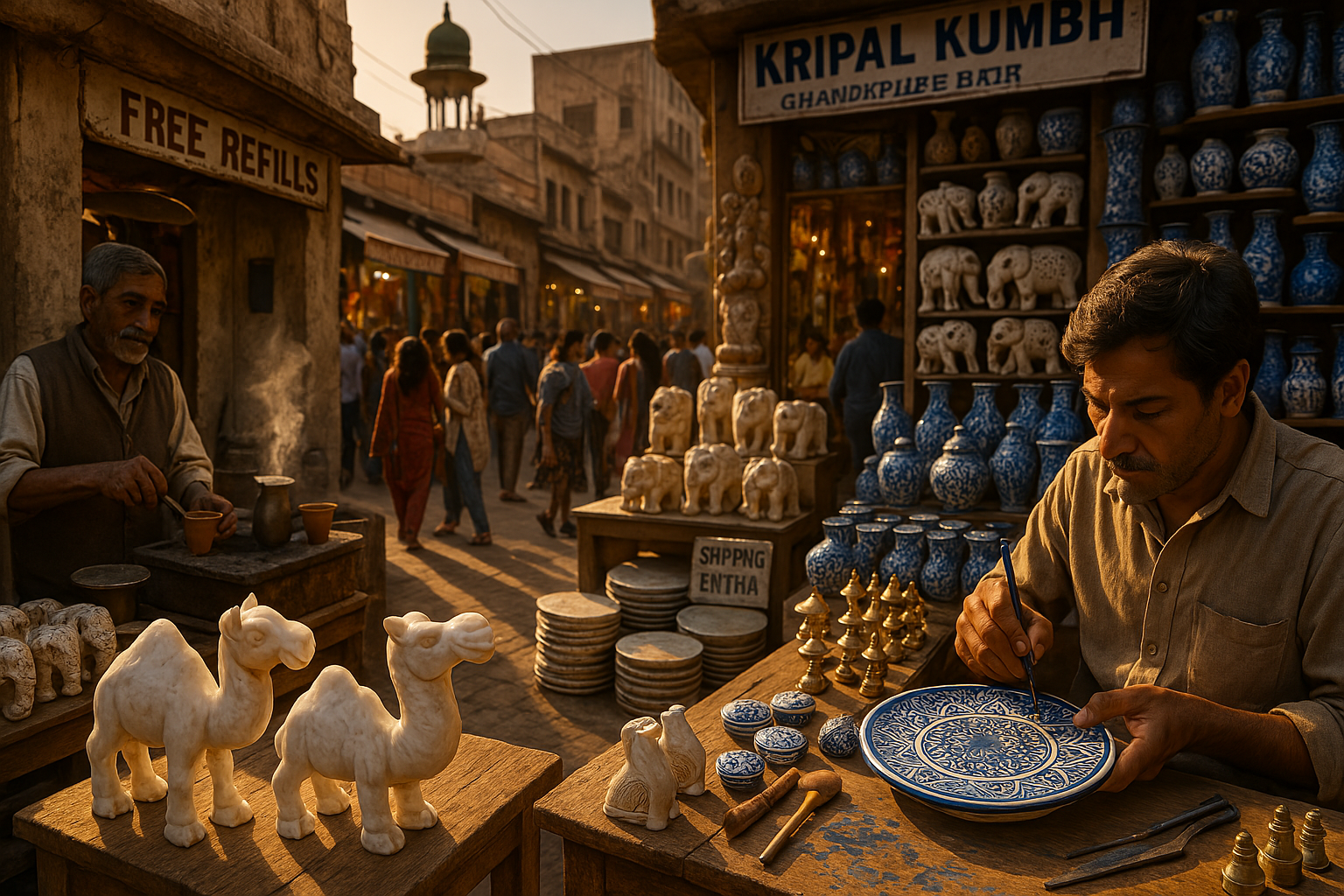
Nehru Bazaar: Spice, Sweat, and Shenanigans
The Real Talk: This market smells like saffron, cumin, and desperation (tourists buying “pure” kesar). The ittar wallahs will dab mitti attar (earth perfume) on your wrist—it smells like monsoon rain. For snacks, Laxmi Misthan Bhandar’s pyaaz kachori is life-changing. Just don’t wear white.
- Must-Buy: Kajal (kohl) from Shahnaz Herbals. Smudges like a Bollywood star.
- Secret: Basant Tea Stall sells bhang lassi during Holi. Ask for “special thandai.” Wink twice.
- Avoid: Pre-packaged spices. They’re stale. Get them ground fresh.
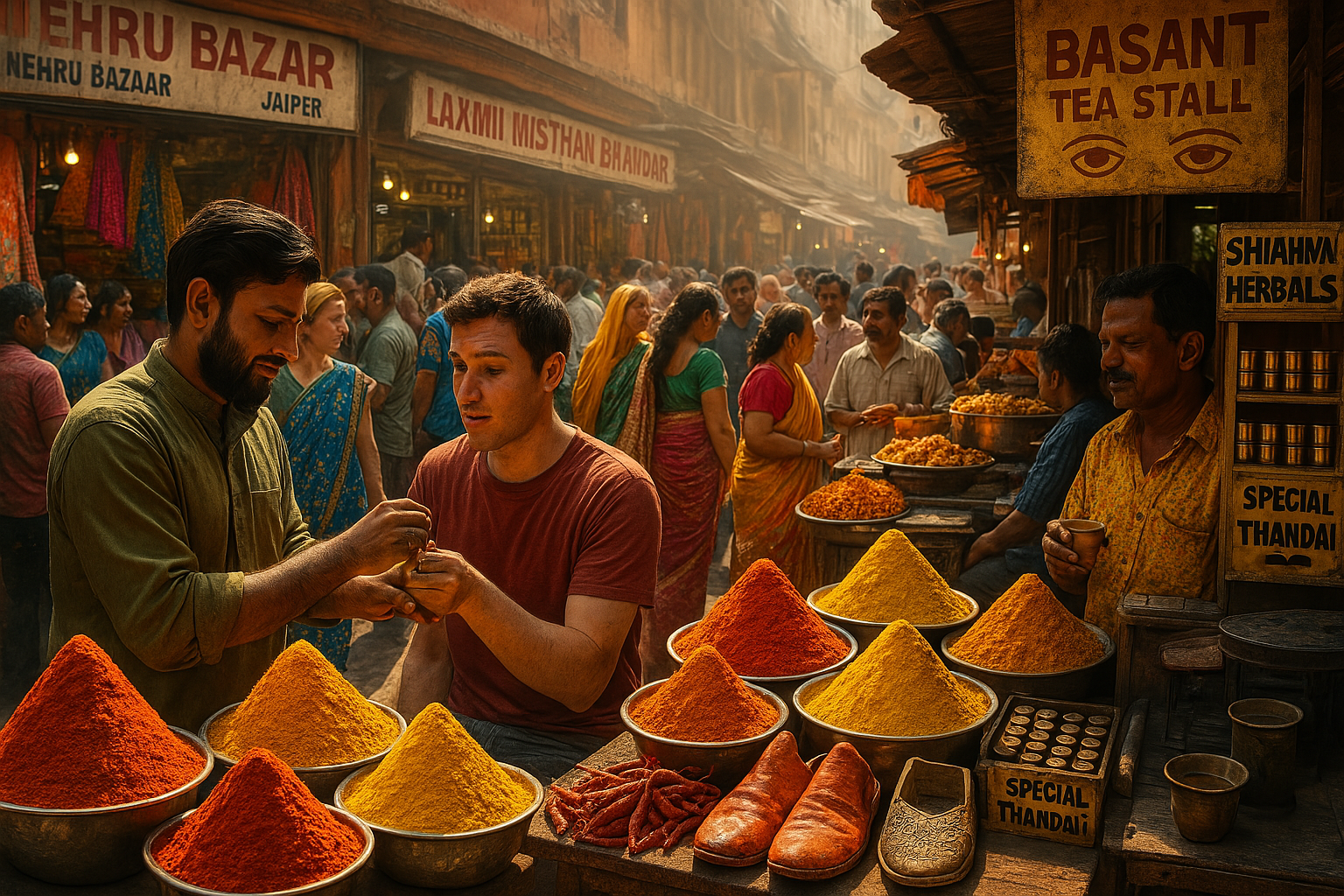
Sanganer: Where Paper Has More Soul Than Your Diary
The Real Talk: This village is where Instagrammable meets eco-friendly. The paper factories use recycled saris and rose petals. At Anokhi, you’ll see bored rich kids “finding themselves” at block-printing workshops. Buy a seed paper notebook, plant it, and watch marigolds grow where your shopping list died.
- Must-Buy: Ajrakh print table runners. They hide wine stains beautifully.
- Secret: Ram Prakash’s backyard has a secret dye vat for custom colors. Bribe him with biscuits.
- Avoid: “Handmade” paper with perfect edges. Machines did that.

How to Survive (and Thrive) in Jaipur’s Markets
- Bargain Like You’re in a Soap Opera: Clutch your chest. Gasp. Walk away. Return. Dramatic? Yes. Effective? Always.
- Eat Street Food Fearlessly: If the vendor’s hands are dirtier than yours, it’s safe.
- Follow the Grandmas: They know where the real deals are. If three grannies are haggling at a stall, join them.
- Carry a Sharpie: Write prices on your arm. Vendors respect organized hagglers.
FAQs of Best Markets in Jaipur: What Tourists Actually Want to Know
Q1. Can I buy real gold here without getting scammed?
A: Yes, but go to Gem Palace or Joyalukkas. Skip the guys whispering “Swiss gold” in alleys.
Q2. Are the “pashmina” shawls real?
A: 90% are acrylic. For real pashmina, go to Amrapali Museum and prepare to sell a kidney.
Q3. Is it safe for solo women?
A: Mostly, but avoid empty lanes at night. Stick to crowds and wear a fake wedding ring.
Q4. What’s the weirdest thing I can buy here?
A: Camel poop paper (yes, it’s a thing) at Sanganer. Great for passive-aggressive thank-you notes.
Conclusion: Best Markets in Jaipur—A Love Letter to Chaos
The best markets in Jaipur aren’t about buying things. They’re about the chai-sipping silversmith who tells you about his daughter’s engineering dreams. The saree seller who calls you “beti” (daughter) while overcharging. The cow that photobombs your Instagram story. You’ll get lost. You’ll overpay. You’ll eat something questionable. And you’ll love every second.
So come. Let Jaipur’s markets stain your hands with henna, your soul with stories, and your wallet with regret. Because here, even the regrets are beautiful.








